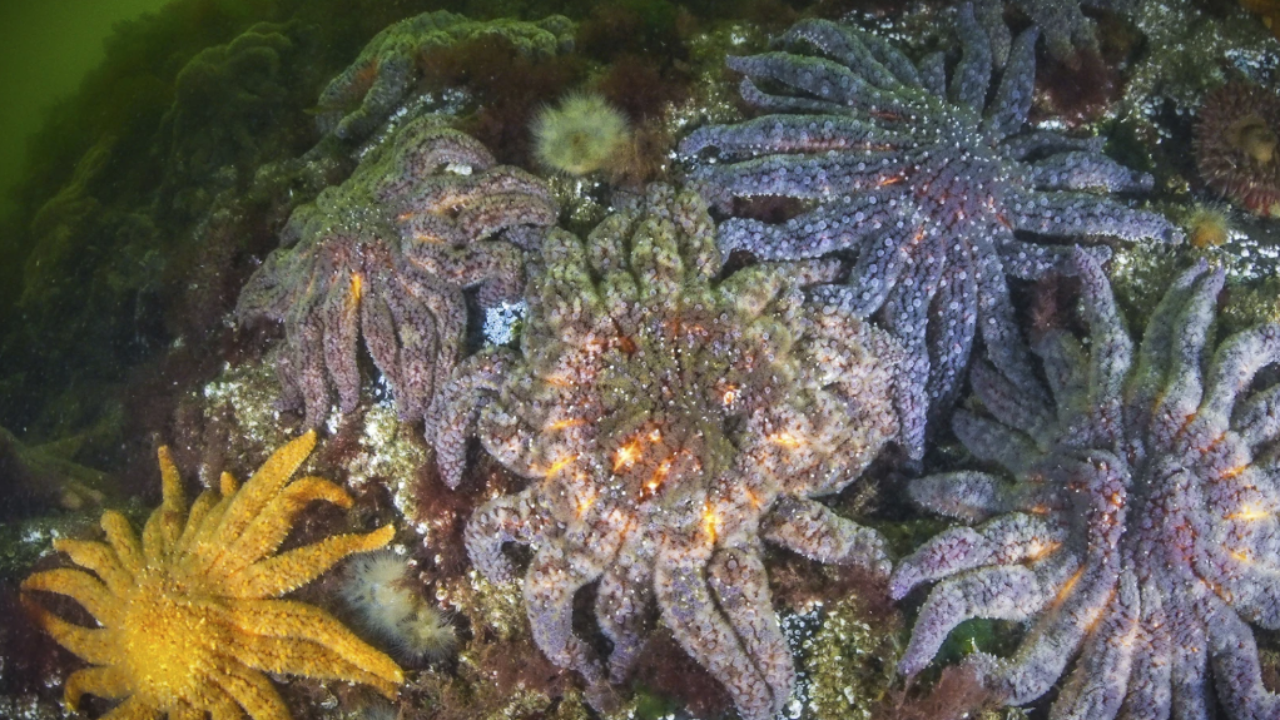
©(Grant Callegari/Hakai Institute via AP)
Vocabulary:
- epidemic /ep-i-DEM-ik/
- lesion /LEE-zhuhn/
- bacterium /bak-TEER-ee-uhm/
- deterioration /dih-teer-ee-uh-REY-shuhn/
- culprit /KUHL-prit/
[noun] – a sudden and widespread occurrence of a disease that affects many individuals at the same time
Health officials are working to stop the epidemic from spreading to nearby towns.
[noun] – a damaged area of tissue on the body, often caused by injury or disease
The doctor found a small lesion on the patient’s skin during the check-up.
[noun] – a single microscopic organism that can cause disease or aid processes in living beings
The bacterium was found in the water supply and needed to be removed immediately.
[noun] – the process of becoming worse or weaker over time
The deterioration of coral reefs has affected many fish species in the area.
[noun] – the person, animal, or thing responsible for a problem or wrongdoing
Scientists confirmed that a virus was the culprit behind the sudden death of many birds.
Article reading:
The breakthrough came after scientists analyzed coelomic fluid—an internal fluid surrounding the organs of living sea stars—which revealed the bacterial culprit. Experts say this method was pivotal, as earlier studies examined only dead specimens lacking this fluid. Researchers now plan to explore whether some sea stars possess natural immunity and whether treatments like probiotics could enhance resistance. Recovery efforts may involve relocating healthy individuals or breeding them in captivity for later release. Restoring sea star populations is considered essential for the resilience of Pacific ecosystems, as these predators regulate sea urchin numbers. Without them, sea urchin populations have surged, destroying about 95% of Northern California’s kelp forests, vital habitats for diverse marine life. Researchers believe the discovery could aid in restoring sea star populations and in regenerating the essential underwater forests they help sustain.
Discussion Questions:
- Have you ever seen a sea star in real life? If so, where did you see it and what did it look like? If not, would you like to see one? Why or why not?
- Have you ever visited a beach or an aquarium with sea animals? If so, which sea animals did you like the most? If not, which sea animal would you like to see first?
- Do you agree that scientists should breed sea stars in captivity to help their population recover?
- Why do you think it took scientists so long to find the cause of sea star wasting disease?
- What do you think are the challenges of moving healthy sea stars to new places?
Summarization
Describe:
- outbreak
- species
- population
- virus
- ecological